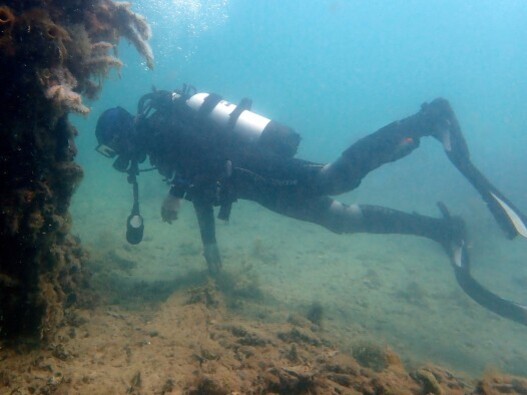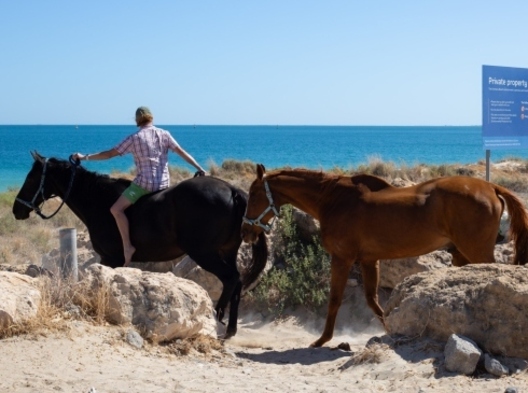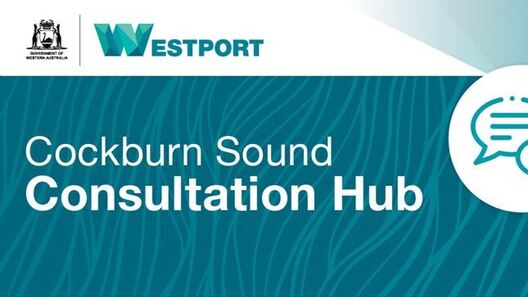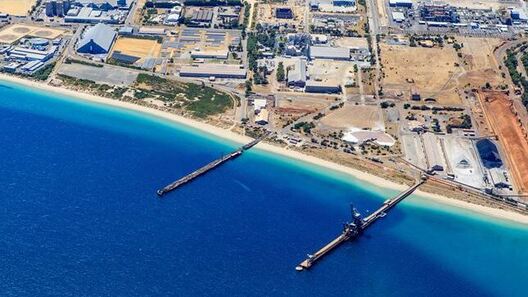
Cockburn Sound is an important ecosystem and place of recreation for Western Australians, and our intent is to support the long-term health of the Sound for people to enjoy for generations to come.
The Sound is used for a wide range of activities, including fishing, boating, sailing, kayaking, diving, windsurfing and kite boarding, as well as running, walking and spending time with family and friends.
These recreational activities will continue in Cockburn Sound for the future, co-existing with the port operations and commercial vessels, as it does now at Fremantle Port, and in the Sound.
We acknowledge there will be impacts to the Sound during the port development. Environmental considerations have and remain a key focus for Westport for the port design, planning and development.
That’s why Westport has invested $13.5 million in a comprehensive marine science program with the Western Australian Marine Science Institution (WAMSI). This program of work has given the most up to date and comprehensive understanding of the Cockburn Sound that we’ve ever had, and is informing our avoid, mitigate and restore approach to planning and environmental management.
We are also working closely with the fishing, recreation and environmental communities to ensure the needs of Cockburn Sound recreational users are understood, and we are keeping this community across the latest Westport updates.
Consultation Hub newsletter
Through the Cockburn Sound Consultation Hub, we are sharing information and consulting with the Western Australian community and stakeholders who are passionate about the marine environment and recreational values of Cockburn Sound. Be the first to hear about Westport's planning in Cockburn Sound and opportunities to have your say.
To develop the new port facilities, recreational activities at the Naval Base beach in the Kwinana Industrial Area will be directly impacted, with public access to the Naval Base beach eventually closing. Please see Naval Base horse beach and Diving tabs below for more information.
Otherwise, recreation in Cockburn Sound is planned to continue and co-exist with commercial shipping, like it does now at Fremantle Port, and will be managed by the Harbour Master.
Once the new port facilities are completed and operational, there may be some areas in the immediate vicinity of the berths and breakwater that cannot be accessed for recreation. These areas are likely to be relatively small and the surrounding waters outside of the port footprint will remain accessible for fishing, boating and other recreation such as kayaking, windsurfing, sailing and boating.
For safety reasons, during construction and dredging there may be some additional temporary access restrictions at specific locations. We will provide more information about this as planning progresses.
Westport recognises that Cockburn Sound is a popular fishing location. Key activities to protect and enhance fishing in the Sound include:
- A Fisheries and Aquatic Resources project to understand and plan how to minimise impacts to fish species and their habitat in the Sound.
- Planning to support healthy marine conditions during construction and seagrass planning and management activities.
The new port will be located between Barter Road and Mason Road in the Kwinana Industrial Area. The land required to build the port includes the Naval Base beach – known as the horse beach, accessed via Riseley Road.
This means that public access to the Naval Base horse beach will eventually close.
The timing for this closure has not yet been determined, however development activities are likely to commence in the late 2020s.
Whilst not a dedicated or official horse beach, Westport recognises this land has been used informally by the horse-riding community for many years and is consulting directly with the community.
Horse beach webinar information session
In March 2024, Westport hosted an online webinar to share information and answer questions.
View the webinar recording.
Horse Beach Survey
Westport asked the people who use the Naval Base horse beach to complete a survey, to better understand how the beach is currently used, how it compares with other dedicated horse beaches in Perth, and what facilities make for an ideal horse beach.
The survey was open 12 March to 31 May 2024 and received 646 responses.
Read the survey report.
Next steps
Westport is using the findings of the survey to explore opportunities to support long-term horse-riding activities in the region ahead of an eventual closing of public access to the beach.
We will continue to update the community as this work progresses.
Register for Horse Beach Consultation
To receive updates about the Naval Base Horse Beach and engagement opportunities please register your details here: Horse Beach Consultation
Westport’s proposed port facilities will directly impact the Naval Base beach, where the decommissioned Kwinana Bulk Terminal Jetty is located, accessed via Riseley Road.
Whilst not a dedicated or official beach for public use, we know it is widely used by the community and is popular for scuba diving.
To facilitate the new port facilities, public access to the beach will eventually cease. The timing for this closure has not yet been determined, however Westport’s works are likely to commence in the late 2020s.
Bulk Jetty Dive Site
All diving activities at the old Kwinana Bulk Terminal (KBT) Jetty, also known as the Bulk Jetty Dive Site, are prohibited due to safety concerns. The structure, owned and managed by Fremantle Ports and located within Port waters, has been assessed as unsafe, and will not be repaired as its removal is expected to be aligned to Westport’s development activities.
The safety of the WA diving community is a top priority for all parties involved. Fremantle Ports is in the process of updating signage at the beach and areas surrounding the jetty, and penalties will apply to any person caught trespassing into the “no diving” zone. The “no diving” zone includes a 50-metre maritime hazard safety zone around the jetty. If you need further information on the jetty and diving restrictions, please contact Fremantle Ports at mail@fremantleports.com.au.
Register to receive information for divers
We have created a registration form specifically for the Naval Base diving community to share relevant information for divers. To stay informed about Westport please register your details.
Like other ports around the world, recreational and competitive sailing will continue to co-exist with port operations.
Race events in the Inner and Outer harbours are currently managed by the Fremantle Port’s Harbour Master and monitored in real time.
Racing safety and communications will continue to be assessed annually by Fremantle Ports in collaboration with Yachting Australia.
Westport is working closely with Fremantle Ports in the planning for new infrastructure in Kwinana and will continue to do so through the definition and construction phase.
Will I still be able to fish in Cockburn Sound?
Yes. Access to Cockburn Sound for recreational fishing will continue and Westport is exploring opportunities to create new community amenities.
Once the new port facilities are completed and operational, there may be some areas in the immediate vicinity of the berths and breakwater that cannot be accessed for recreation. These areas are likely to be relatively small and the surrounding waters outside of the port footprint will remain accessible for fishing.
Through the WAMSI-Westport Marine Science Program and our stakeholder consultation process, Westport is engaging with the local recreational fishing community to identify ways to support healthy fish stocks and habitats.
What are the expected impacts to seagrass in Cockburn Sound?
Visit our Seagrass page for detail on Westport’s seagrass research and restoration activities.
Why is an offshore breakwater necessary?
A breakwater is required to protect ships accessing the port facilities from disruption by wave energy.
As the project moves into the detailed design phase, it is expected there will be additional refinements to the proposed breakwater, and we will be exploring how the breakwater may support marine habitat.
How is Westport considering the cumulative impact of other development in Cockburn Sound?
Westport recognises that interactions with past, present and reasonably foreseeable projects and developments in Cockburn Sound needs to be considered in the environmental assessment.
The state and commonwealth environmental impact assessment for Westport includes a cumulative impact assessment. Westport is in ongoing consultation with other likely proponents for reasonably foreseeable projects in Cockburn Sound to ensure the cumulative impact assessment reflects all future projects with as much detail as is available at the time of assessment.
Will the Naval Base Shacks be impacted?
The Naval Base Holiday Park shacks are located approximately 2.7km north of the new port facilities. Westport will not impact the shacks.
Please visit our FAQ page for more of Westport’s most frequently asked questions.






